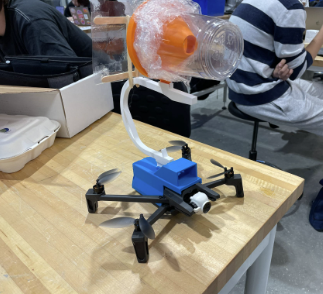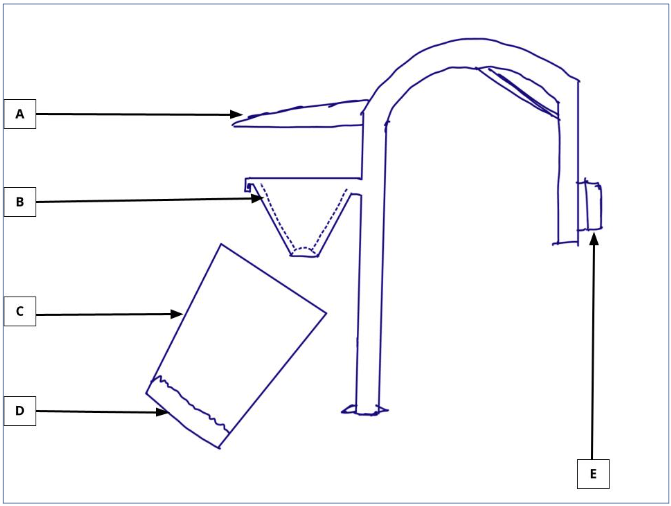Overview
I served as the Mechanical Engineering Lead for the Blue Devil Forest Divers, Duke's XPRIZE Rainforest competition team. With a team of four, we developed a drone attachment to attract and capture insect samples, leveraging DNA barcoding technology to study rainforest biodiversity.
Throughout this project, some key skills I have demonstrated include:
•Proficiency in the iterative prototyping process
•Innovative problem-solving to meet client standards
•Clear communication abilities between client and team
As of December 2022, our design has been successfully delivered and will be deployed by the Blue Devil Forest Divers for the semifinals in Singapore.
Problem Statement and Context
My team was tasked to develop a lightweight drone attachment capable of operating for 24+ hours and rapid detachability in a rainforest ecosystem. After consulting our client, we created the project design criteria.
The Parrot ANAFI was chosen as our drone due to its portable characteristics while featuring 4K video and a top speed of 33 mph.
Additionally, in previous years, groups have experimented with attachments involving nets and adhesives in which the drone flies around in hopes that insects will collide with the apparatus. However, our client raised concerns due to none of these designs having shown desired results in terms of total number and variety of insects caught. As a result, my team selected an insect trap concept. Rather than chasing after our targets, my team believed it would be more efficient to lure insects through a one-way cone setup into a container through the use of stimulants.
Design Solution
Our design consists of a one-way cone trap which will be set out into the rainforest, suspended from a branch, designed to collect insects by luring them with an ammonia compound, trapping them inside a container.


A. Rain cover
B. Cone (clips onto hook) and traps insects
C. Detachable cup containing bait clips onto cone
D. Bait (ammonia) to lure insects
E. I-Lock attachment to drone
The design takes advantage of a friction-fit I-Lock mechanism, allowing the device to be effortlessly detachable in under 30 seconds by sliding two locking components which addresses our client's detachability objectives. To keep our system lightweight, most materials involved some form of a plastic composite. The rain cover and detachable cup are both PET plastic, whereas the cone and hook were 3D printed using PLA. The system was brought down from an original weight of 170g to 67g on our final prototype, achieving a 61% weight reduction. Our design also does not feature electronics or any other components that may be prone to water damage.
Reviewing the design criteria, our product met most objectives and constraints, rated IPX 5 for waterproofness, weighing under 70 g, and highlighting both easy detachability and 24-hour durability, but did not meet the insect collection objective. This was expected as the design did not reach higher levels of fidelity before being delivered to the client.
By flying the drone right below a branch, the entire mechanism will detach from the drone and swing to balance itself on the branch. After a sufficient time period, the device will be retrieved. See the videos below for a demonstration!
Conclusion
Our design has been delivered to the Blue Devil Forest Divers and successfully deploys an ammonia-based trap which has been proven to collect insects. In the future, we would hope to see more testing on optimization of stimulants and potentially the implementation of a mixture of stimulants to attract greater quantities and varieties of insects.
